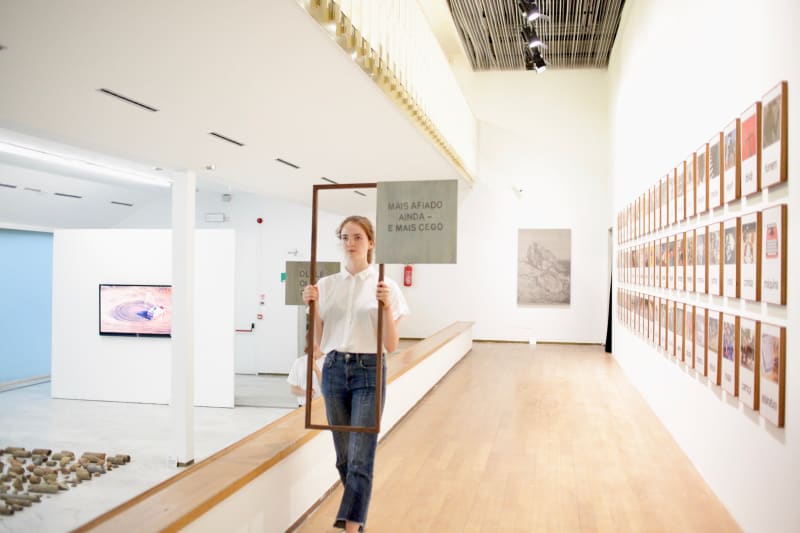This major exhibition at Milan's Padiglione d'Arte Contemporanea, declares itself to be in conflict. 30 Brazilian artists covering 40 years tease out the conflicts at the heart of Brazilian culture in installations, photographs, videos and performance.
The stance of resistance or affirmation is in the video Capitão do Mato (2016). Filmed in the Amazon rainforest, it has as its starting point the bird of the species Lipaugus vociferans, whose scientific name means “dark screamer”. Popularly known as “captain of the forest”, this bird inhabits a large part of the forests of Latin America and was considered a whistleblower of the fugitive slaves who went into the woods, because it denounces the presence of strangers with its high-pitched and shrill song, demarcating a territory whose radius can reach up to 1500 m. Because of this, the popular name of the bird was also given to men who guided themselves by the song of the bird when they walked in silence in the woods in search of escaped slaves.
In Parra’s video, we follow in the footsteps of a man who walks through the woods. We always see him from the back, in the distance, never with clarity or definition, from a subjective look, which puts us in the role of someone looking for or chasing something. We go with this look scanning the forest, unknown, dense, mapping its spaces. The sound of footsteps and breathing creates tension and gives us the feeling that something is going to happen very soon. As we walk, the noise of the “captain of the forest”, of the scavenger bird, becomes louder and clearer when compared to the other sounds of the forest, a sign that we are approaching something we are looking for, without knowing for sure what it is . When, at last, we find a man, black, in front of a tree, facing the viewer. Instead of running away or putting himself in a posture of submission, as blacks have done for so many centuries and continue, in some way, being forced to do, this man asserts his presence and makes him the sound of the bird that once denounced him . His tone is not one of threat, but of affirmation.
Parra speaks of veiled, historical violence in relation to women and the black. A violence that can be felt and manifested from the body or in the way of speaking. She seeks, then, to subvert the place of servitude and to bring up relationships of abuse and submission that seem forgotten and erased from day to day.
Text by Jacopo Crivelli Visconti, curator of Sao Paulo Biennial.
On the occasion of the exhibition Knife in the Flesh, Padiglione d’Arte Contemporanea, Milan, 2018.
